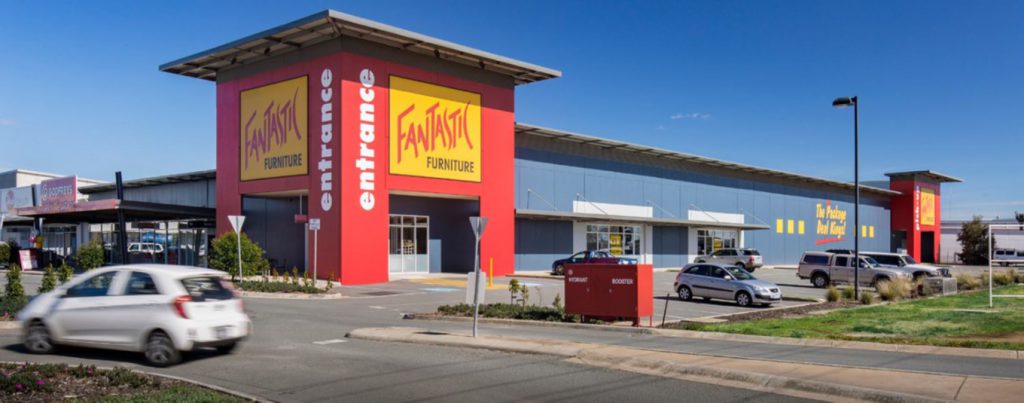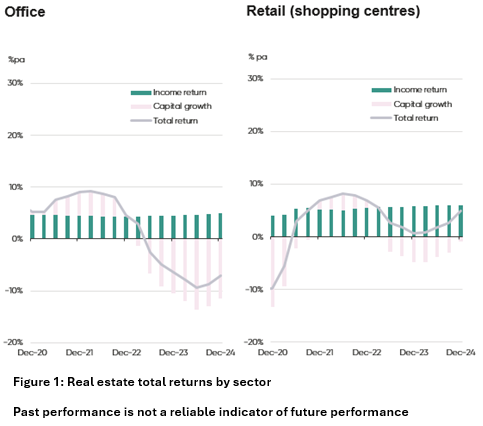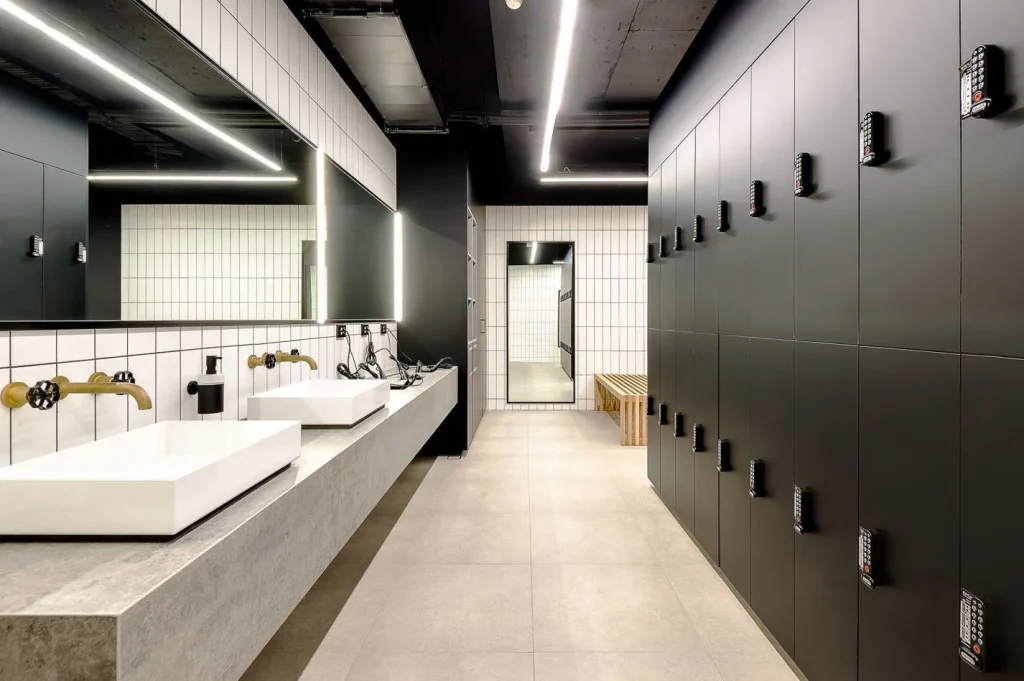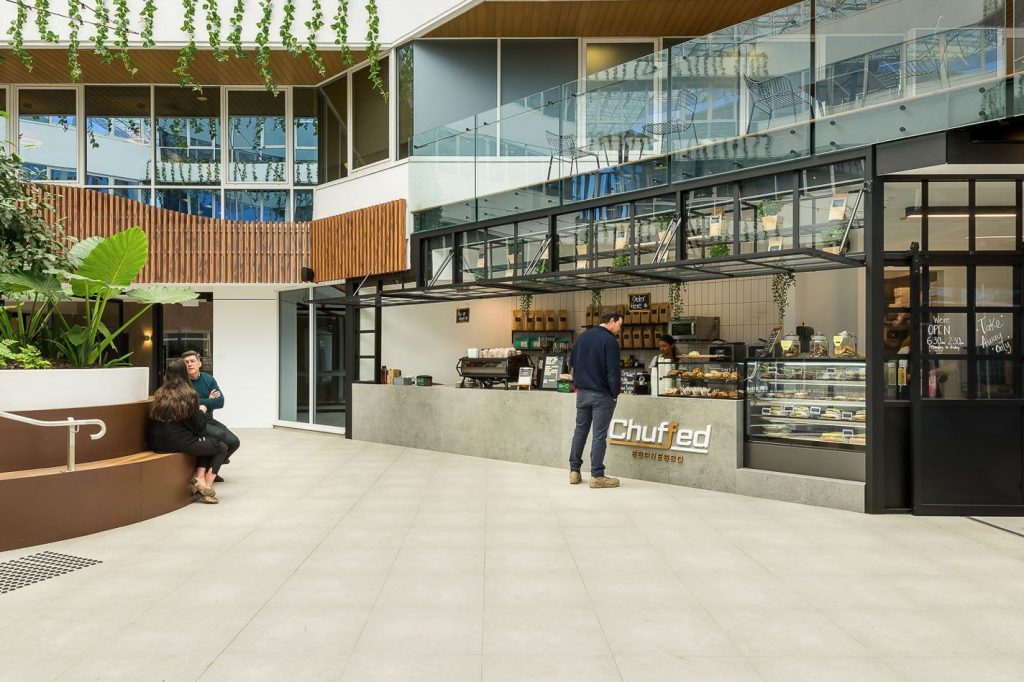H2 2025 Outlook and Market Report
Acure Asset Management provides in-house research, analysis and news bulletins to subscribers on a monthly basis.
Our reports are based on Australian Property and Market trends as they happen – as well as reflective reports on our portfolio and performance.
Subscribe for more tailored News and Insights from Acure Asset Management below or on our Contact page
For Australian commercial real estate, the first half of 2025 has been a watershed. The prognosis has improved following years of rising interest rates, tighter financial conditions, and changing consumer behavior. Increased confidence in real assets is being brought about by declining interest rates, stabilising property values, good yields, and economic expansion.
However, economic uncertainty has been exacerbated by financial market volatility and simmering geopolitical dangers brought about by the recently elected US administration and its imposition of broad tariffs.
However, Australia is in a strong position to weather any tariff volatility. The nation has a stable political climate, a central bank that can lower interest rates further, a federal government that can provide fiscal stimulus, and a population that is still growing at a high rate. These serve as strong defenses against an unstable environment and enhance Australia’s standing as a refuge for international investment.
The retail industry is proving to be more resilient than anticipated. Five years ago, employees started going back to work, and alternative industries like healthcare and data centers still attract investors. Industrial demand is still high due to e-commerce and logistics, and growth in all sectors is being supported by increasing urban density. There are new opportunities.
In light of this, it is imperative that investors comprehend the evolving dynamics of Australia’s real asset sectors. This is our summary of the factors influencing the Australian market in the remaining months of 2025.

Rates Down, Yields Up, Total Returns Improving
The Reserve Bank of Australia (RBA) is expected to lower interest rates by an additional 50 basis points later this year. Stabilisation is imminent following a period of declining commercial real estate values. Real estate rates are stabilizing even if bond yields are still rather high.
What can be called a “new reality”—a protracted era of public market volatility, geopolitical risk, subpar global growth, and intermittent inflation risk—may have been brought about by the uncertainty the US government fostered.
Under these circumstances, investors find unlisted real assets—such as infrastructure related to real estate, health, social services, transportation, and energy—more alluring than listed stocks. This is due to their inherent physical worth and crucial purpose in maintaining the smooth operation of society. They usually offer safe income streams, high rates, the ability to hedge against inflation, and little association with stocks. With investor demand resuming, industrial and retail real estate in particular are seeing a surge of interest.
The fourth quarter of 2024 saw an increase in total returns due to rising income levels and very stable capitalisation rates. Office and healthcare were dominated by the retail and industrial industries. In the second half of 2025, we anticipate that this tendency will continue.

The Office is Back, and Retail is Improving
With demand rising, employees going back to work, and tenants taking part in space-related decisions again, the office market is beginning to show the first genuine indications of recovery.
Major corporations like big banks and consulting firms are reclaiming space to make room for future growth, which has reduced the availability of sublease space. In the first quarter of 2025, subleasing in Australia’s four major central business districts (CBDs) decreased by 52% compared to 2020 levels. Sydney saw the highest take-up since 2016, while Melbourne saw an improvement.
The market is still divided, and although if vacancy rates have decreased in the majority of city central business districts, they are still high. While other spaces struggle, well-located or high-quality buildings continue to enjoy great leasing demand. Tenants are prioritizing premium office spaces in central CBD areas due to a noticeable “flight to quality.”
Now, the conditions for a recovery are present. At the moment, rents are about 20% lower than what is required to support new construction. The floor area of projects in Sydney’s central business district that are scheduled to be finished in the next five years is just one-third of what has already been finished. The number is comparable in Melbourne. Over the next five years, a sizable supply gap should cause vacancy rates to decline and rents to rise.
The retail sector is ready for expansion following years of structural difficulties. Australia has recovered from a period of low per capita spending. For the first time in a few years, wages are increasing more quickly than inflation, mortgage payments are decreasing, and tax breaks are being implemented. In the second half of 2025, headline sales growth is anticipated to accelerate along with both discretionary and non-discretionary spending.
At the same time, low vacancy rates are maintained by a limited supply of new shopping centers. Planning limitations and construction costs are naturally stifling new supply. There are no new regional shopping centers under construction, and the fresh supply pipeline of subregional and regional retail space is only operating at 70% of the 20-year norm.
In large cities, rising office occupancy and tourism are helping the retail industry. The mood of investors is getting better, especially for assets that are strategically positioned. Despite posting a small 2.8% total return in the year ending February 2025, retail unlisted funds were the best-performing sector on the MSCI Australian wholesale index and far outpaced the overall market’s -3.1% p.a. return.


H2 Tailwinds
2025 appears to be a year of transition and recuperation as we get into the second half of the year. The value cycle is at its lowest for many types of real assets. In retrospect, these times have nearly always been recognised as favorable buying opportunities.
As the year progresses, rising overall returns are probably going to give real estate investors more confidence because interest rates are now declining, values are stabilising, and supply is limited. Australia’s real assets, with their high yields and inherent value, are well-positioned to shine over a three to five year period, protected by the country’s solid fundamentals and safe haven status, even though global worries may act as a short-term barrier.

